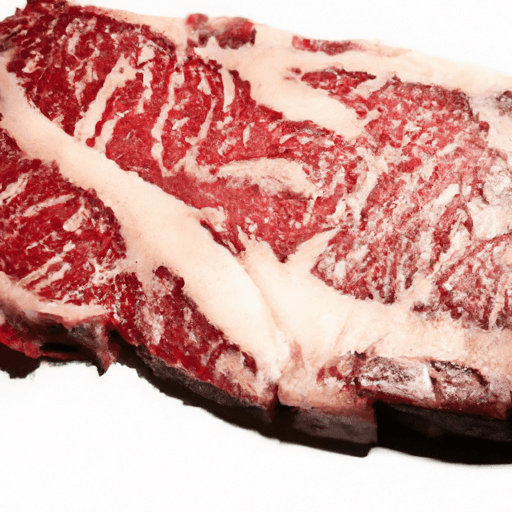The Art of Cooking Steaks: A Feast for the Senses
There is something undeniably captivating about the sizzling sound and mouth-watering aroma of a perfectly cooked steak. Whether you prefer yours rare, medium, or well-done, there’s no denying the appeal of this timeless classic. In this blog post, we will explore the art of cooking steaks, delving into its taste, common uses in cooking, nutritional value, and some interesting facts that make it a staple in many cuisines around the world.
Taste that Leaves You Craving for More
One of the main attributes that sets steaks apart from other meats is its unique taste. The rich, savory flavors and tender texture of a well-prepared steak are often enough to make your taste buds dance with delight. The marbling of fat within the meat imparts a buttery flavor, while the charred exterior adds a delightful smokiness. Together, these elements create an explosion of umami, leaving you craving for another mouthful.
Versatile in the Kitchen
Steaks are incredibly versatile in the kitchen, offering endless possibilities for culinary creativity. They are most commonly pan-seared or grilled, which helps to develop a beautiful sear and seal in the juices. You can serve a steak as the centerpiece of a meal, accompanied by a side of roasted vegetables or a fluffy baked potato. Alternatively, you can slice it thinly and use it in sandwiches, salads, or stir-fries for a burst of flavor. From elegant filet mignon to bold ribeye, there is a steak cut to suit every occasion and culinary preference.
Nutritional Powerhouse
While steaks are often associated with indulgence, they also provide several vital nutrients necessary for a healthy diet. A quality steak is an excellent source of high-quality protein, essential for muscle development and repair. It also contains important minerals such as iron, zinc, and B vitamins, which contribute to energy production and support overall well-being. As with any food, moderation is key, but when enjoyed as part of a balanced diet, steaks can be a nutritious addition to your meal plan.
A Glimpse into Steak History and Facts
Steaks have a rich history dating back centuries. The practice of consuming grilled or roasted meat is believed to have originated with our prehistoric ancestors. Meat, especially steaks, has always had a primal allure and remains a symbol of celebration and feasting. In the early 1800s, the Industrial Revolution brought about advancements in meat preservation techniques, allowing steaks to become more accessible and widespread.
Interesting Fact: Did you know that the term “steak” is believed to have originated from the Middle English word “steik,” which means a thick slice of meat? This demonstrates how steaks have been an integral part of our culinary lexicon for centuries.
The Perfect Steak: A Culinary Journey
Achieving the perfect steak requires skill, precision, and a keen eye. The cooking method, temperature, and resting time all play a crucial role in determining the end result. Whether you prefer a rare, medium-rare, or well-done steak, mastering the art of cooking it to perfection can take time and practice. A meat thermometer can be an invaluable tool to ensure the ideal level of doneness according to your taste.
Conclusion
Steaks are a beloved culinary wonder that has stood the test of time. With their tantalizing taste, versatile nature, and nutritional benefits, they continue to hold a special place in our hearts and on our plates. So, fire up the grill or heat up that skillet, and embark on a flavorful journey that will leave you savoring every single bite. Remember, the art of cooking steaks is a culinary adventure that is well worth the effort. Bon appétit!
Steak
Origin: The concept of steak dates back to ancient times, where meat was cooked directly on open flames. However, the practice of cooking beef steak as we know it today originated in the 19th century in the United States. It became popular due to the abundance of cattle in America.
Common Uses: Steaks are typically cooked by grilling, broiling, or pan-frying. They are often enjoyed as a main course and can be served with various sauces, such as peppercorn, mushroom, or red wine reduction. Steaks are also commonly used in dishes like sandwiches, salads, stir-fries, and stews.
Nutritional Benefits: Steaks are an excellent source of high-quality protein and essential nutrients. They are particularly rich in iron, zinc, vitamin B12, and other B-vitamins. However, it is worth noting that the specific nutrient composition can vary depending on the cut of steak and the cooking method used.
Unique Properties: One unique property of steaks is the Maillard reaction. This reaction occurs when the proteins and sugars in the meat react with heat, resulting in the delicious browning and flavor development on the surface of the steak. Additionally, steak cuts can vary in tenderness, marbling (the distribution of fat within the meat), and flavor profiles, providing a range of options for different preferences.
Historical Significance: The consumption of beef steak has historical significance in various cultures. For example, steak tartare, a dish made with raw minced beef, has a long history in French cuisine. In the United States, the steakhouse culture emerged in the mid-19th century, with famous establishments like Peter Luger Steak House in New York City becoming iconic dining destinations.




Use the share button below if you liked it.
It makes me smile, when I see it.